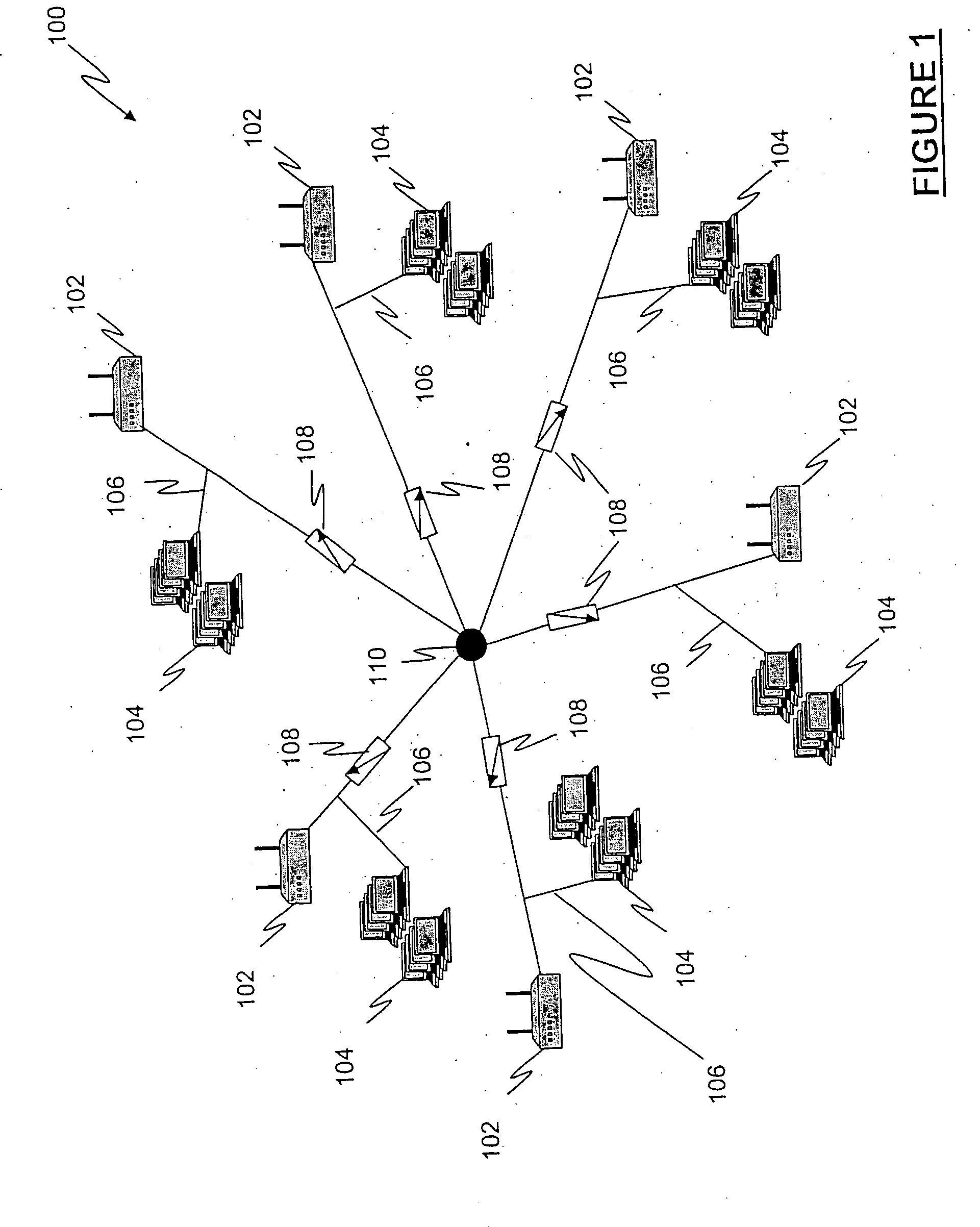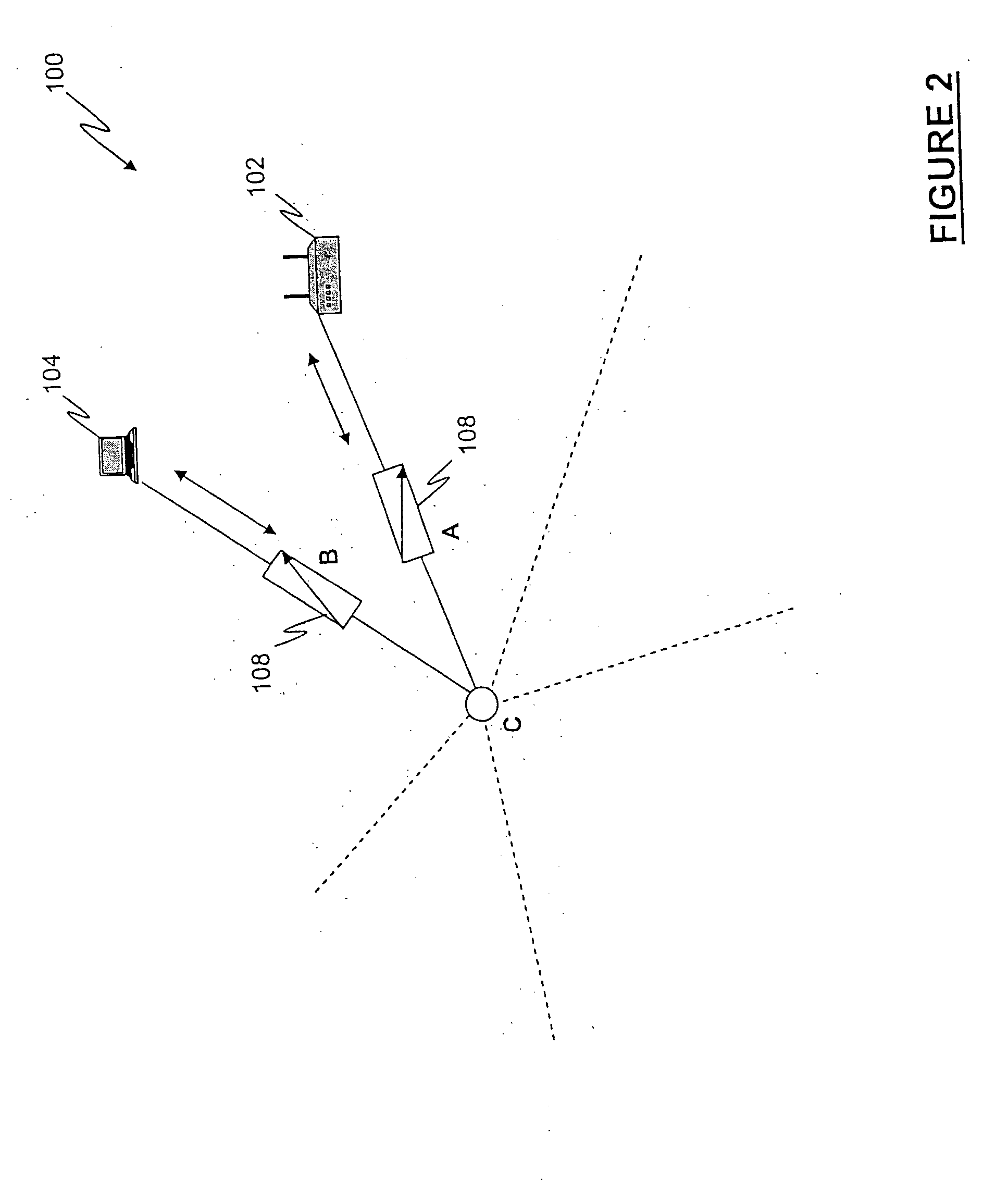Wireless device isolation in a controlled RF test environment
- Summary
- Abstract
- Description
- Claims
- Application Information
AI Technical Summary
Benefits of technology
Problems solved by technology
Method used
Image
Examples
first embodiment
[0119] Referring to FIG. 15 and FIG. 16, a functional block diagram and a conceptual block diagram of a test system 600 are shown, respectively. Test system 600 includes a test chassis 602 having an RF combiner 604, a TestMAC module 606 and a plurality of CM's 608, wherein TestMAC module 606 and plurality of CM's 608 are communicated with RF combiner 604. RF combiner 604 is communicated with an access point 610 which is further communicated with a plurality of wireless clients 612. It will be appreciated that, in this configuration, there are shown seven CM's 608 and seven wireless clients 612, wherein each of the seven CM's 608 is associated with only one of the seven wireless clients 612 and that each CM 608 is only half populated by wireless NICs in order to simplify the explanation.
[0120] Additionally, referring to FIG. 16, a ‘group’ of multiple wireless clients 614 are shown as being representative of TestMAC module 606, wherein TestMAC module 606 is configured as a TestMAC mod...
second embodiment
[0121] Referring to FIG. 17 and FIG. 18, a functional block diagram and a conceptual block diagram of a test system 700 are shown, respectively. Test system 700 includes a test chassis 702 having an RF combiner 704, a TestMAC module 706, a plurality of CM's 708, a first RFPM 710 and a second RFPM 712, wherein TestMAC module 706, plurality of CM's 708 and first and second RFPM′710, 712 are communicated with RF combiner 704. Test system 700 also includes a first access point 714 communicated with first RFPM 710 and a second access point 716 communicated with second RFPM 712. It will be appreciated that first access point 714 and second access point 716 are connected to first RFPM 710 and second RFPM 712, respectively, through the RF test head connector 455.
[0122] It will be appreciated that this configuration advantageously permits a simple roaming scenario to be tested in which the wireless NICS, having first been associated with first access point 714 are all caused to roam to secon...
third embodiment
[0123] Referring to FIG. 19 and FIG. 20, a functional block diagram and a conceptual block diagram of a test system 800 are shown, respectively and depicts two Basic Service Sets (BSS) 801, each of which includes a wireless access point 102 and a plurality of wireless clients 104. Test system 800 includes a first access point 802, a second access point 804, a first test chassis 806, a second test chassis 808 and a third test chassis 810, wherein first test chassis 806, second test chassis 808 and third test chassis 810 are connected in a hierarchical manner and wherein first test chassis 806 and second test chassis 808 represent the two BSS's 801.
[0124] First test chassis 806 includes a first RF combiner 812 communicated with a first TestMAC module 814 and a plurality of first CM's 816, second test chassis 808 includes a second RF combiner 818 communicated with a second TestMAC module 820 and a plurality of second CM's 822 and third test chassis 810 includes a third RF combiner 824 ...
PUM
 Login to View More
Login to View More Abstract
Description
Claims
Application Information
 Login to View More
Login to View More - R&D
- Intellectual Property
- Life Sciences
- Materials
- Tech Scout
- Unparalleled Data Quality
- Higher Quality Content
- 60% Fewer Hallucinations
Browse by: Latest US Patents, China's latest patents, Technical Efficacy Thesaurus, Application Domain, Technology Topic, Popular Technical Reports.
© 2025 PatSnap. All rights reserved.Legal|Privacy policy|Modern Slavery Act Transparency Statement|Sitemap|About US| Contact US: help@patsnap.com



